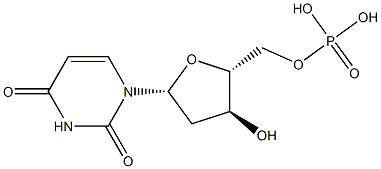eclosion hormone
- CAS No.
- 86836-08-0
- Chemical Name:
- eclosion hormone
- Synonyms
- eclosion hormone
- CBNumber:
- CB61311211
- Molecular Formula:
- C9H13N2O8P
- Molecular Weight:
- 308.181881
- MDL Number:
- MOL File:
- 86836-08-0.mol
eclosion hormone Chemical Properties,Uses,Production
Description
The eclosion hormone is a brain neuropeptide that controls the release of the ecdysis-triggering hormone (ETH) from Inka cells and activates a network of 27/704 neurons in the ventral nerve cord responsible for ecdysis behavior and postecdysis processes in moths, flies, and probably other insects.
Structure
Sequences of EH in arthropods are highly conserved with six cysteine residues. EH of M. sexta is a 62-aa peptide that has three disulfide bonds, Cys14-Cys38, Cys18-Cys34, and Cys21-Cys49.
?Properties
Eclosion hormone:Mr 6813; soluble in water, physiological saline, 50%–70% methanol or ethanol.
Regulation of synthesis and release
The expression of the eh gene is probably constitutive. EH release is induced by ecdysis-triggering hormone (ETH)action on its receptor (ETHR-A) in the VM cells.EH release during preecdysis of moths and flies is indicated by a loss of immunoreactivityin VM axons and the appearance of cGMP in Inka cells and the neuronal network 27/704.Unlike the VM neurons, the recently identified Dl and Dm neurons, and somatic cells do not express either subtype of ETH receptor (ETHR-A or ETHR-B) indicating that EH release from these cells is governed by some other mechanisms.
Biological functions
There are central and peripheral roles of EH in moths. Centrally released EH activates a network of neurons (27/704) through the elevation of cGMP that is specific for the regulation of ecdysis and postecdysis processes. Peripherally released EH elicits cGMP production in endocrine Inka cells and causes massive ETH secretion to activate additional neurons controlling ecdysis.EH probably controls tracheal inflation and may act on Verson’s glands during ecdysis.Together with VM cells, EH-expressing D1 and Dm neurons govern adult ecdysis behavior in Drosophila. Persistance of D1 cells into adulthood suggests their different, albeit unknown, function. Presumptive release sites of D1 cells in medula suggest that they may modulate visual processing and possibly also“gate” adult eclosion after light exposure in flies. Function of somatically expressed EH remains to be examined but it may relate to the air-filling of the new tracheae.





